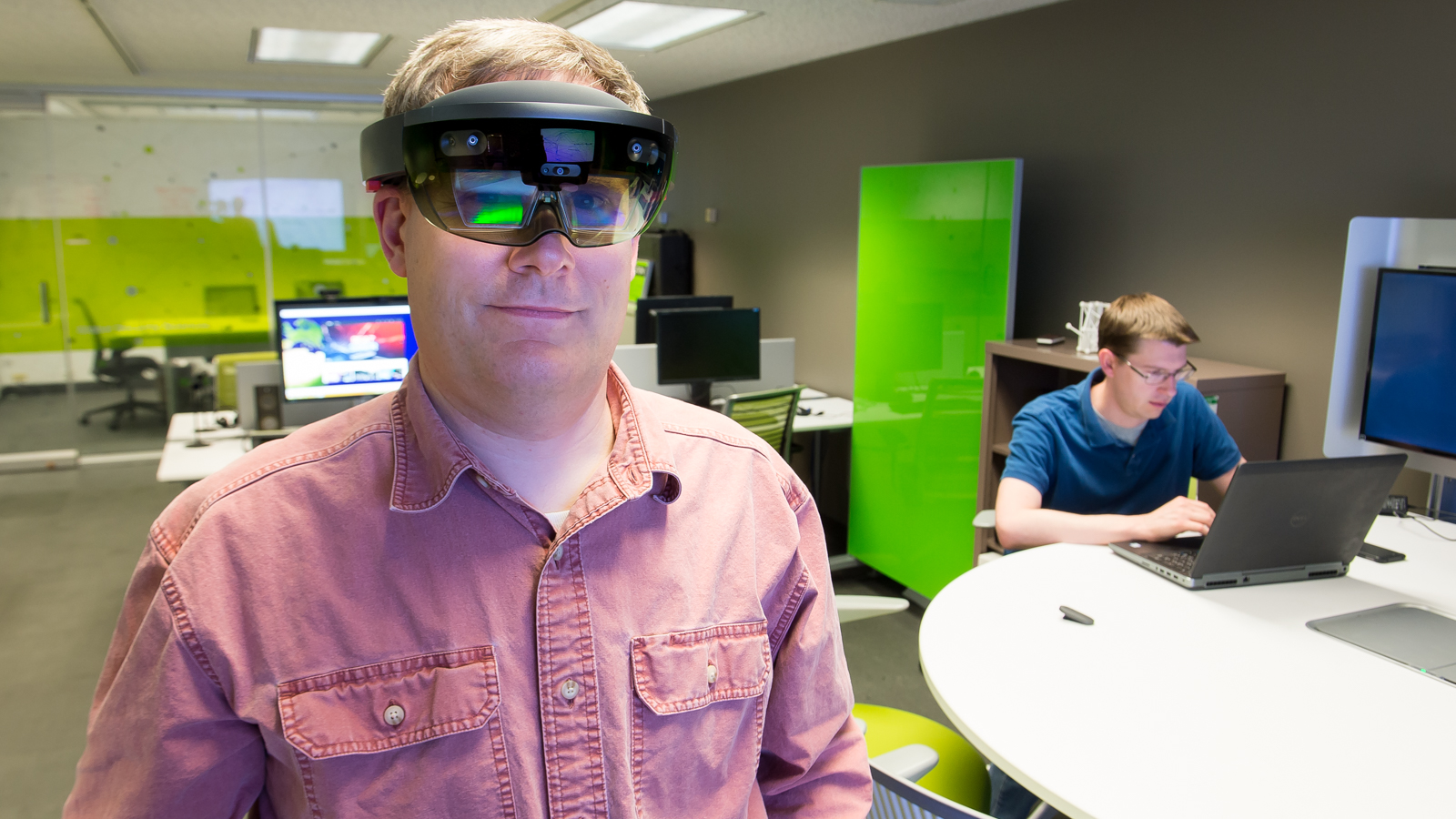Climate Resilience
Experts leverage decision science to identify actions to help public and private sector entities adapt to and become resilient in the face of climate change impacts and synchronize actions to the benefit of integrated natural and man-made infrastructure.
With people across the globe experiencing the effects of climate change — from droughts in the western United States and Brazil to floods in eastern Europe, India, and across the United States — governments and businesses are seeking ways to adapt and become more resilient.
For more than 20 years, researchers at Argonne have led major research efforts and developed tools and methodologies to support local, state, and federal sponsors in enhancing the security and resilience of the nation’s critical infrastructure in the face of natural and manmade disasters. In the case of climate change, decision and information scientists collaborate with laboratory experts in climate science to inform decisions that governments, businesses, and other agencies can take to adapt to identified risks, guard against them, or recover more rapidly from their impacts. This collaborative effort led to the establishment of the Center for Climate Resilience and Decision Science in 2021.
Leveraging a system wide view, Argonne researchers are able not only to help individual organizations but also synchronize the efforts of entities working across a range of public and private sectors to address complex, entangled and cascading impacts from climate change:
- State, local, tribal, and territorial government
- Emergency management and public safety
- National security and defense
- Energy security and resilience
- Environmental impact analysis and natural resources protection
- Infrastructure owners and operators
- Community members
- Public health
- National laboratories and academia
Integrating the efforts across the spectrum of sectors increases the overall resilience of a system that encompasses the electric, petroleum, natural gas, water, and telecommunications infrastructure that serves our transportation, healthcare, manufacturing, housing, food and agriculture, and finance institutions.
Learn more about our Capabilities, Facilities, and People.
 CAPABILITIES
CAPABILITIES
Infrastructure Sciences
Infrastructure systems are complex, interconnected, and distributed networks that integrate both physical and cyber components. Disruption to infrastructure poses risks to the public health and safety of communities, national security, and economic prosperity.
Building on world-class infrastructure assessment capabilities powered by high-performance computing and informed by subject matter experts, Argonne researchers are integrating advanced system modeling, prioritization algorithms, database development and interdependency data analytics to deliver a toolset that allows our partners to anticipate, respond to, adapt to, and recover from infrastructure disruptions, such as those during extreme weather events.
Argonne’s DISrupt approach identifies infrastructure assets that carry the potential to propagate cascading impacts across interdependent infrastructure systems, helping to pinpoint high-priority failure points, such as interconnected coastal infrastructure increasingly vulnerable to major weather events or electric grid systems vulnerable to increasing wildfire activity. The ability to identify these potential failure points within and across infrastructure sectors provides essential information for managing risk.
Emergency and Disaster Analysis
The global community is experiencing disasters of increasing complexity, intensity, and frequency. Urbanization, rapid population growth, climate change, and new technologies all influence the global risk landscape.
Argonne assists emergency managers, planners, and responders in preparing for, responding to, and recovering from natural disasters and other incidents. Our researchers apply comprehensive and multidisciplinary assessment, doctrine development, and planning processes grounded in decades of experience. These processes help emergency planners assess multi-jurisdictional capabilities, anticipate response bottlenecks and breakdowns, understand how people behave in emergencies, and identify ways to enhance resilience.
Our capabilities are especially useful for complex, interactive problems, such as protective action decision making, disaster supply chains, and utility restoration. Argonne is a national leader in developing emergency exercise methods and tools, such as those used to prepare for extreme weather events. The Public Affairs Science and Technology (PAST) Fusion Center integrates social scientists and emergency managers to provide training focused on identifying effective communication strategies during these events.
Social, Behavioral and Decision Science
National and global security issues involve countless complex, interdependent systems that feature myriad political, economic, operational, environmental, technological and behavioral inputs.
Argonne develops and applies innovative modeling strategies to address pressing national challenges in decision science and analysis based on sociological influences and the behavioral dynamics of communities. Our decision science experts employ powerful multidisciplinary analytical expertise and computing resources toward understanding complex social systems, characterizing how they interact and predicting their performance under future conditions. For example, Argonne scientists modeled the spread of COVID-19 across communities to aid state and local decision makers in response planning and management.
Our team approaches complex problems as dynamic and interrelated systems to address uncertainty, rapidly changing environments, and imperfect or incomplete data. We apply novel methods for agent-based modeling, complex adaptive system modeling, system dynamics, and complex network analysis to facilitate decision making. We leverage high-performance computing resources, such as those available at the Argonne Leadership Computing Facility, to create software tools that broaden the applicability of and access to modeling and simulation.
Center for Climate Resilience and Decision Science
The Center for Climate Resilience and Decision Science increases the resilience of built and natural infrastructure systems to the impacts of a changing climate through advancing the integration and application of climate projections and the decision sciences.
Analytic Fusion Cell
The Analytic Fusion Cell enables analysts to harness the power of near-real-time data in a collaborative environment. Just as emergency operations centers allow domain experts from diverse fields to work together during natural disasters, the Analytic Fusion Cell enables scientists and engineers at Argonne — and also partners from industry, government, and the community — to interact with climate modeling outcomes in an accessible and collaborative environment. Through the use of geographic information system touchscreens; mounted monitors with weather and news feeds; and a workspace conducive for fast-paced, collaborative analysis, users can explore data, test various courses of action to reduce risks, or respond to climate and extreme weather threats in a simulated environment.
Argonne’s Studio for Augmented Collaboration
Argonne’s Studio for Augmented Collaboration (STAC) addresses the challenges of evaluating infrastructure and systems data from across a wide range of scientific domains by combining multiple technologies — including data warehouses, virtual and augmented reality, and artificial intelligence — to enable more effective collaboration. Climate scientists and infrastructure engineers, for example, visualize their own systems in very different ways, so evaluating the impacts of a flooding event on a central business district requires creative ways to combine data. Technologies like virtual reality provide the tools needed to combine, evaluate, and visualize these disparate datasets in an immersive, collaborative way.
Argonne Leadership Computing Facility
The Argonne Leadership Computing Facility (ALCF), a DOE Office of Science User Facility, enables breakthroughs in science and engineering by providing supercomputing resources and expertise to the research community. The higher-resolution simulations, continental-scale study areas, and decades-long periods for future simulations that climate models need to deliver more detailed, location-specific, and actionable projections require more computations and therefore more computing power. ALCF’s supercomputing capabilities enable Argonne’s climate and environmental scientists to run these simulations in a matter of days, weeks, or months, instead of the years — or even decades — that would be required using conventional computers.














